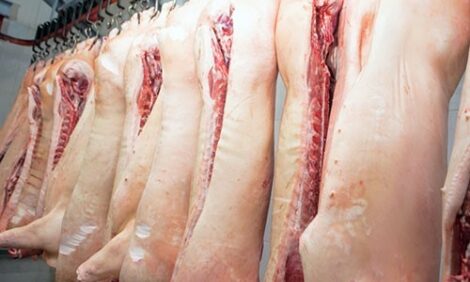



Hog industry could be first to blink if corn prices stay high
DES MOINES - As hog producers continue to compete with ethanol plants for corn, Dermot Hayes believes the industry could be the competitor to blink first. Hog production may need to decrease says an ag economist. Hog production may need to decrease says an ag economist. |
“We're going to have to get used to $4/bu. corn,” Hayes, an ag economist at Iowa State University, said during the recent annual meeting of the Iowa Pork Producers Association.
“It's not a temporary thing unless foreign energy prices plummet for some reason,” he said. “We can grow up to 16 billion bushels of corn by having larger yields and fewer soybeans. We need to get used to continuous corn.”
For the pork industry to survive, Hayes said hog production will have to decrease.
“Pork producers can only pass along the higher production costs if they collectively reduce production,” he said. “The market is going to require a long period of losses.
“This industry is very good at exporting pork, but if our costs increase annually more than our competitors, we could lose some of that market.”
Hayes said ethanol plants can afford to pay up to $4.05/bu. for corn and still break even. Those prices, he said, make it tough for hog producers to make money.
“We're in need of 2 billion bu. of corn annually for ethanol demand, and we estimate that will double by the end of the next crop year,” Hayes said. “We further expect that to double again, to 8 (billion) to 10 billion bu.
“Nationwide, the ethanol industry is following the pork industry because ethanol likes cheap corn. That makes it a very tough competitor for the pork industry.”
Hayes said the corn market has responded accordingly due to the increased demand from the ethanol industry.
He noted the cost of production for pork producers has increased by up to 20 percent in the past few months, and said that percentage could climb as high as 40 percent in the near future.
Soybean meal prices also have begun to increase because of fewer soybean acres expected to be planted this year.
Estimates indicate the carryover of corn stocks this year will be similar to 1996 levels, when Iowa had to import corn to meet demand.
Source: Farm&Ranch Guide








